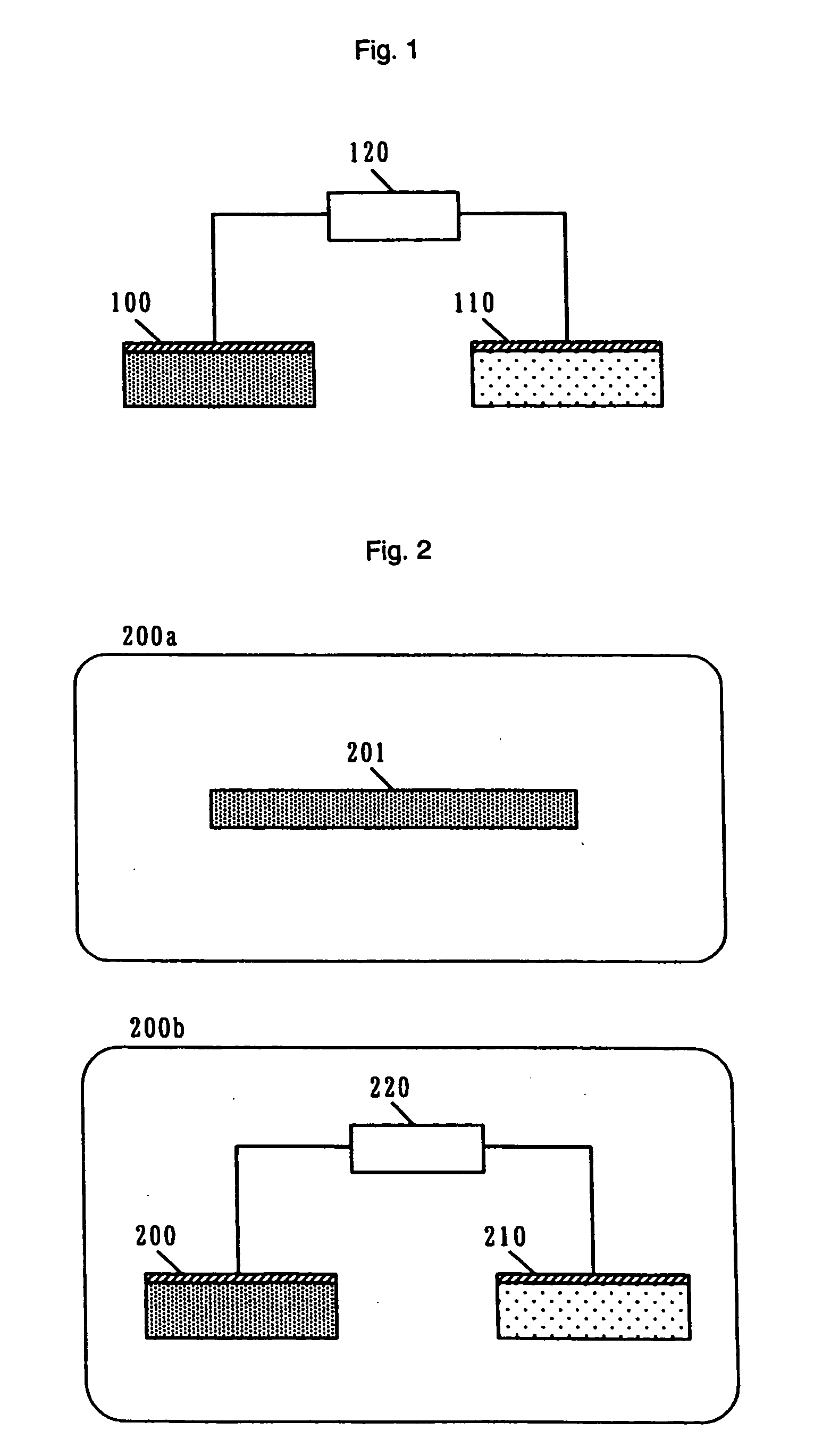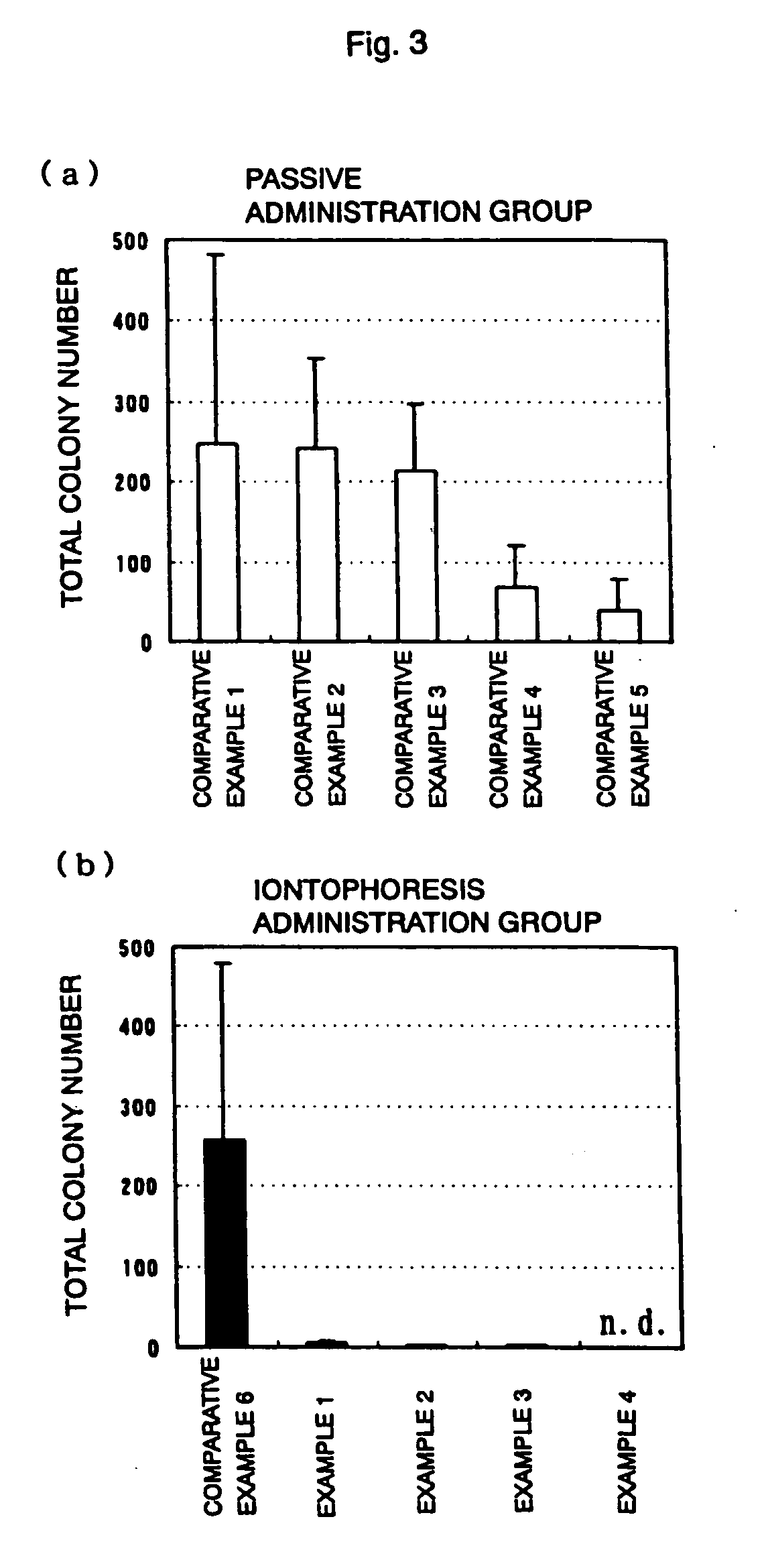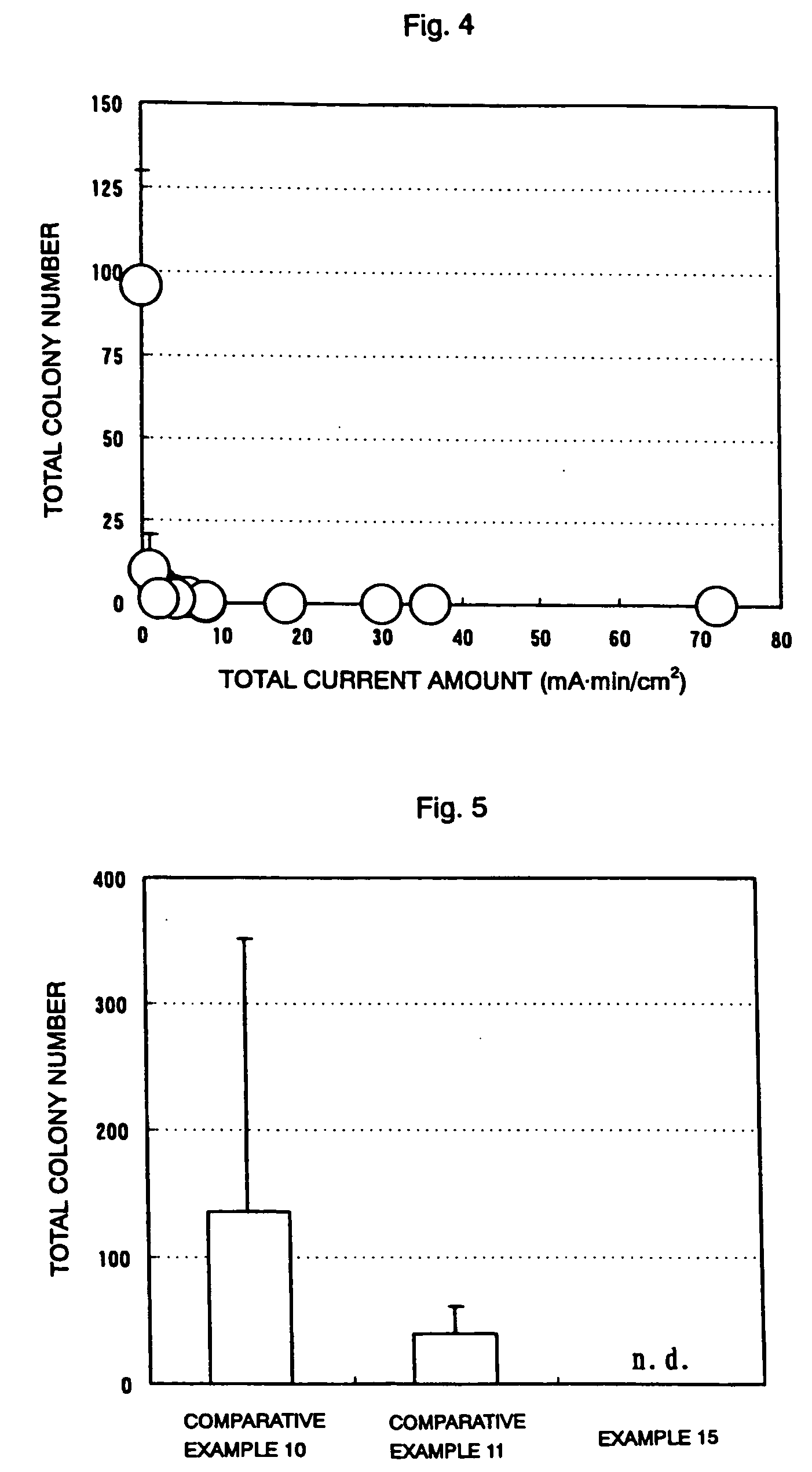Apparatus and assembly for administering antimicrobial agent
a technology of antimicrobial agents and apparatuses, applied in electrotherapy, therapy, etc., can solve the problems of high medical service fee and hospital cost, inability to completely kill bacteria with disinfectants, and insufficient disinfection effect of conventional disinfection methods using disinfectants, etc., to achieve convenient and safe use, short period of time
- Summary
- Abstract
- Description
- Claims
- Application Information
AI Technical Summary
Benefits of technology
Problems solved by technology
Method used
Image
Examples
experimental example 1
[0083] In Experimental Example 1, the influence of chlorhexidine glucuronate (Hibitane: manufactured by ZENECA Pharma) concentration on the activity of skin bacteria was examined adopting the passive administration and the iontophoretic administration to show the comparative results.
[0084] Hereinafter chlorhexidine glucuronate is referred to as “CHXD” and chlorhexidine as “CHX” for short. In the experiment, a horizontal diffusion cell (effective area; 1.77 cm2) was used and porcin skin incised with a dermatome (about 600 μm) was used as a diaphragm. Isotonic phosphate-buffered solution, pH 7.4, (containing 10 mM sodium chloride) was used as a receptor solution, and a silver electrode and a silver / silver chloride electrode were applied as an anode and a cathode, respectively. After the experiment, bacteria on the skin surface were taken by the medium contact method.
[0085] The stratum corneum was stripped from the porcin skin by the tape stripping method and bacteria on the skin sur...
experimental example 2
[0088] In Experimental Example 2, the influence of the amount of current applied on the activity of skin bacteria was assessed in the same in vitro test system as in experimental Example 1.
[0089] As shown in Table 2, in Comparative Example 7 as a control group the number of colonies on untreated skin was determined, and in Examples 5 to 14 and Comparative Examples 8 and 9 DC iontophoresis (1 w / v % CHXD, containing 0.09 w / v % sodium chloride) was applied under the respective conditions. All the results of Comparative Examples 7 to 9 and Examples 5 to 14 are plotted (mean value±standard deviation) in FIG. 4.
TABLE 2CurrentExperimentalTotal currentCurrentapplyingExample 2amount (mA · min / cm2)(mA / cm2)duration (min)Comparative000Example 7Example 51.00.110Example 62.00.120Example 72.00.210Example 84.00.220Example 94.00.410Example 106.00.320Example 118.00.420Example 128.00.810Example 1318.00.360Example 1430.00.560Comparative36.00.3120Example 8Comparative72.00.3240Example 9
[0090] As is ap...
experimental example 3
[0091] In Experimental Example 3 the relation between the skin stimulation and the amount of current applied was examined.
[0092] Topical stimulation test on rabbit skin was carried out using Japanese White male rabbits (about 3.0 to 4.0 kg body weight) of which backs had been clipped with a pair of hair clippers, treated with a shaver and defatted and disinfected by rubbing with 70% ethanol aqueous solution-impregnated absorbent cotton. Commercially available donor electrode pads and reference gel (Trans QE: manufactured by IOMED) were applied to the rabbit back skin. The electrode pads were impregnated with 2 mL of donor solution. Comparative Examples 7 to 9 and Examples 5 to 14 were carried out under the same current application conditions as those of Experimental Example 2 shown in Table 2. After completing the application of current, the electrode pads were removed, and 24 hr after the removal, the skin stimulation to which the donor electrode had been applied was visually obse...
PUM
 Login to View More
Login to View More Abstract
Description
Claims
Application Information
 Login to View More
Login to View More - R&D
- Intellectual Property
- Life Sciences
- Materials
- Tech Scout
- Unparalleled Data Quality
- Higher Quality Content
- 60% Fewer Hallucinations
Browse by: Latest US Patents, China's latest patents, Technical Efficacy Thesaurus, Application Domain, Technology Topic, Popular Technical Reports.
© 2025 PatSnap. All rights reserved.Legal|Privacy policy|Modern Slavery Act Transparency Statement|Sitemap|About US| Contact US: help@patsnap.com



